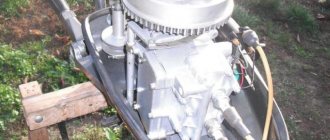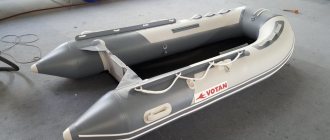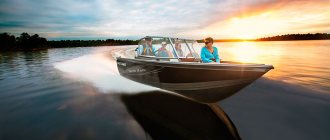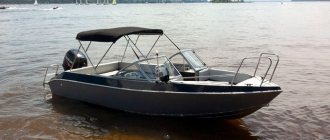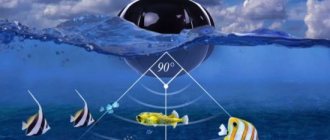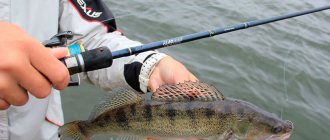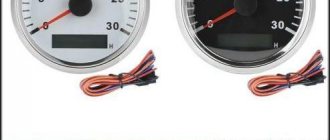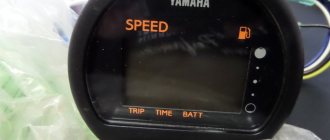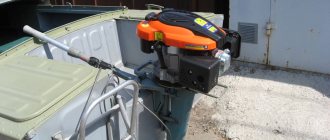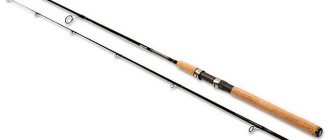So, you have chosen a boat and are going to install an outboard engine on it. It is easy for a non-specialist to get confused in the abundance of models of such motors. Models that seem similar at first glance may, in fact, be seriously different from each other.
To select the appropriate option, it is not enough for the buyer to focus on the amount of horsepower and engine dimensions. You will have to figure out the displacement, the number of cylinders, the differences between two-stroke engines and four-stroke engines, carburetor engines from injection engines, and direct fuel injection systems from electronic ones.
We'll tell you what all these parameters mean for the engine and how not to break your head when reading the technical data sheet of the outboard motor.
What power should an outboard motor have?
Modern outboard engines range in power from 2 to 450 hp. (Mercury Racing 450R). There is also the Seven Marine 627SV, whose power is 627 hp, but in the fall of 2021 the Volvo Group, which includes the brand, announced that it was going to stop producing them.
Engine power depends on two main parameters: the number of cylinders and displacement. Displacement is also referred to as the "displacement" of an engine. This is the sum of the working volumes of all cylinders, which are calculated based on their cross-section and the length of the piston stroke. Displacement shows how much fuel an engine can burn in one cycle.
If a manufacturer wants to increase engine power, he has two options: increase the number of cylinders or increase their volume.
The tiny Yamaha has 2 DMHS with 2 hp. only one cylinder and a displacement of 50 cm³ (0.05 liters). The powerful Mercury Racing 450R has 8 cylinders and a displacement of 4.6 liters. For comparison, an engine of the same displacement is used in BMW x5 cars.
The engine cylinders can be located either on one side or opposite each other, at an angle (then the letter V appears in the model name).
How many horses a boat can “hold” depends on each specific model. Moreover, overdoing it and putting an overly powerful motor on a boat is no better than putting an underpowered one. If the engine power is too high, the transom on which the engine is mounted may collapse or become detached from the hull.
The shipyard always tells the future owner what minimum and maximum engine power the boat is designed for.
The optimal ratio is 1 hp. for every 20–25 kg of loaded boat weight.
For small, basic RIBs and PVC boats, tiny 5hp outboards are often sufficient.
Although even in this case, maximum power and body length are not always in tandem. For example, the 3-meter RIB Brig Falcon 300 comes with a Honda BF outboard engine with 4 times more power - 20 hp. (although the owner can opt for options with a power of 4–15 hp.) The 4-meter RIB Boston Whaler 130 Super Sport is equipped with a Mercury ELPT EFI with a power of 25–40 hp.
On the 5-meter aluminum fishing boat NorthSilver 545 Fish, the maximum engine power already exceeds a hundred and reaches 115 hp.
The 6-meter fiberglass bowrider Jeanneau Cap Camarat 6.5 BR in its maximum configuration boasts a Yamaha F200 FETL with 200 hp. The minimum for this model is 130 hp. We increase the length of the hull by another meter, and we find up to 250 “heads” “in the herd” of the 7.1-meter aluminum boat Volzhanka Voyager 700.
On 8-meter boats (for example, a boat with a Chris-Craft Catalina 27 center console) they already install almost the most powerful outboards - up to 425 hp. Although on this model you can limit it to 200 hp, up to an absolute maximum of 450 hp. for one engine, such a boat is very close.
The most powerful suspensions are already found on the 9.6-meter “off-road” with a trawler house Grizzly 960 Unimog. It needs a total of 900 hp, and this is achieved by installing either a pair of 450 hp engines or three 300 hp engines.
Which motor is better for a PVC boat?
When deciding how to choose a motor for a boat, you need to consider several main factors with which you can choose the optimal model.
- Engine type: electric or gasoline. The former do not pollute the environment, but when the charge runs out you will have to row with oars. Gasoline ones are more familiar to most users.
- Power. There are certain recommendations for boats. You should not buy a device where the power is lower than recommended, because then it will move slowly.
- Dimensions. There are certain dimensions for installing a motor on a boat. This must be taken into account when purchasing.
- Screw depth. When choosing, it is necessary to take into account the height of the vessel. It is necessary to determine the optimal size in order to rationally use available resources. You want the propeller to be completely submerged in the water, but not too deep.
- Manufacturers. There are several companies that are considered the most famous. Their products are very popular in the market. It is recommended to choose products from reputable companies offering service.
Thus, many different factors have to be taken into account to select the best products. There is quite a wide range. Practice shows that the cheapest products are the least reliable. But not all expensive models can boast excellent wear resistance. Therefore, it is recommended to choose motors from this TOP list. They fully meet their requirements, have a good margin of safety and are characterized by low fuel consumption.
Video - How to choose a boat motor
What is the difference between two-stroke and four-stroke outboard motors?
Another important characteristic of the engine is how many times the cylinder piston is lowered in one cycle. This determines how the cylinder chamber is cleaned of exhaust gas and filled with fuel: simultaneously or in two stages.
According to this parameter, engines are divided into two-stroke and four-stroke.
Two-stroke engines weigh less and, due to their simpler design, are easier to maintain. They are not picky about the quality of fuel.
With the same engine size, a two-stroke will be slightly more powerful than a four-stroke.
Another plus is that two-stroke engines are 30–40% cheaper. But at the same time, they are noisy and consume 20% more fuel than four-stroke engines.
In addition, due to the tendency of spark plugs to become oily, they operate unevenly, especially at low and idle speeds. Although on modern models, manufacturers try to reduce all these disadvantages to a minimum.
Most low-power outboard motors (2.5–4 hp) are made two-stroke. Although such a system can be found on models with power up to 250 hp. And for four-stroke engines there are no restrictions on power.
Primarily due to their efficiency, four-stroke engines are much more popular. In addition, they are quieter and more environmentally friendly.
They have a more complex design, so they are heavier and their maintenance is not as simple as servicing two-stroke engines.
Four-stroke engines are also more demanding in terms of fuel quality. But they do not require mixing gasoline with oil.
This, however, causes problems during transportation.
If a two-stroke engine can be transported in any position, then four-stroke engines can be transported either vertically or on one specific side.
If you do not follow these recommendations, oil will enter the combustion chamber and flood the spark plugs (and then the trunk of the car).
In addition, because of this, an oil change after every 100 hours of operation is added to the maintenance of a four-stroke engine.
Carbureted or fuel-injected outboard motor?
Fuel supply systems in engines are divided into carburetor and injection.
In a carburetor engine, liquid fuel is first mixed with air in a separate chamber to form a homogeneous mixture (this process is called “carburetion”) and only then is it sucked into the cylinders.
The design of the carburetor is relatively simple, so the financial costs of purchasing and subsequent maintenance of such an engine are much lower than in the case of injection systems. The carburetor does not require electricity to operate - it just needs the air flow that the engine draws in.
Carburetors are less demanding on fuel quality.
They can operate longer and more stably than injection engines with obviously bad gasoline. And if clogged, they can be cleaned manually.
Carburetors also survive a small ingress of water without consequences.
However, carburetors are much less environmentally friendly than injectors. Without a microcomputer, it is impossible to continuously monitor the composition of the exhaust so that it meets strict modern standards. Although a carburetor engine makes less noise and vibrations.
Alas, the efficiency of carburetors in terms of fuel consumption also leaves much to be desired.
Without an electronic control system, regardless of engine speed, the carburetor always delivers the same amount of fuel.
You won't be able to compensate for this by using diesel instead of gasoline - only gasoline carburetors are available.
Injection systems, which appeared in the second half of the twentieth century, differ from carburetors in that they force fuel injection into the air flow using nozzles. The electronic system accurately calculates the required dosage.
On marine engines, two methods are used for this: direct injection (Direct Fuel injection (DFI)) and electronic (Electronic Fuel Injection (EFI)).
The direct injection system is used on both gasoline and diesel engines. True to its name, direct injection injects fuel under pressure directly into the combustion chambers of the cylinders.
The fuel cools the combustion chamber, which has a positive effect on engine power and reduces fuel consumption and emissions.
With electronic injection, fuel is sprayed into the air stream just before the intake valve of each cylinder.
Unlike direct injection, it is not the combustion chamber that is cooled, but the intake valve. This improves the evaporation of fuel before entering the combustion chamber.
Engines with injectors start faster and operate more stably at any load level.
Injection systems are reliable. But if something in them does break, due to the complex device it will not be possible to solve the problem “on the knee”. To diagnose injectors, special equipment from a service center is required.
Leg length
Outboard motors also differ from each other in the length of the shaft and the “leg” within which it runs from the motor at the top of the engine to the propeller at the bottom. The pipe that contains the shaft is called the “stern tube.” Because of this, the entire “leg” is also called “deadwood”.
The length of the deadwood must be correctly related to the height of the boat transom - the distance from the top of the transom to the keel.
Short leg motors are mainly designed for small PVC and RIB boats. However, engines with large deadwood are sometimes installed on them.
If you install the motor too high, the propeller will be susceptible to cavitation (it will begin to capture air bubbles) and because of this, corrosion. In addition, during cavitation, the speed of the boat decreases, and engine speed increases. As a result, the motor overheats.
An anti-cavitation plate above the propeller helps prevent cavitation.
But when the motor is installed high, it does not work. Its place is 5–25 mm below the bottom.
It is also not a good idea to install the motor too low. Because of this, water resistance increases unjustifiably. The engine will spend extra energy to overcome the resulting friction, and power will be lost. Also, due to the increased draft, there is a high risk of accidentally damaging the propeller in shallow water.
There are four types of deadwoods. But for each manufacturer they differ both in designation and length. It is also worth considering that depending on the manufacturer, instead of the deadwood itself, the recommended transom height may be indicated.
Rating of inflatable motor boats
The ratings are compiled based on an analysis of the characteristics offered by the manufacturer and the opinions of the owners.
The maximum engine power, number of seats, bottom and keel rigidity, passenger comfort, transom parameters, and overall dimensions are taken into account.
Russian enterprises produce inflatable floating devices of good quality.
The best PVC boats for motors
The main quality of a boat is its safety and reliability. To do this, it is manufactured using a flotation multi-chamber design.
The parameters of the motor that can be installed on a floating craft are indicated by the manufacturer. The following models deserve attention:
- "Pelican 245T".
- "Frigate 300 EK"
- "Navigator 400 NDND".
- Gladiator RIB 420.
- Mercury RIB 420.
The lightest PVC boats for motors
Boats designed for solo travel and fishing are distinguished by their compactness and low weight. For example, light and small “Aqua 2800”. It can be equipped with a hard bottom.
The Admiral vessels have good characteristics. They have seats that move and are fixed, a solid hard floor. Additional equipment may include a guardrail and comfortable inflatable seats.
Propeller or water jet
At the end of the “leg” of the average outboard is an anti-cavitation plate and propeller.
In the basic configuration, manufacturers supply a propeller with average characteristics with the engine. It is highly likely that it may not be suitable for the loads that await the propeller during operation by a particular owner. Therefore, having decided on the engine, it is worthwhile to select a propeller for it. We have already talked about how to do this earlier.
However, there is another option - a water cannon.
Yes, in addition to the classic stationary water jet, which can be found on yachts, there is also an outboard jet engine. Such models can be found in the segment of engines from 25 to 150 hp in Mercury, Yamaha, Honda, Tohatsu, Evinrude.
The upper part and “leg” of such an engine look exactly the same as those of any other suspension. But instead of an anti-cavitation plate and a screw, a water-jet installation is located underneath it at the end of the “leg”.
It is also worth noting that the “leg” of jet outboard engines is very short. The water jet is located immediately under the mount, by which the engine is hung on the transom.
The advantages of a water jet over a propeller in this case are the same as with stationary engines. Since the propeller is closed, and the motor (even by outboard engine standards) does not go deep into the water, a boat with such equipment can freely navigate shallow water without fear of catching a rocky bottom and breaking the propeller.
What, then, is the difference between a suspended water cannon and a stationary one? Let's say it right away. Not only in the level of mobility (although this is an important plus of pendants).
Advantages of a stationary water jet:
- Better weight distribution due to the engine being located on the bottom rather than high on the transom
- More efficient water intake system. The same flow that flows around the bottom hits the propeller. Nothing slows him down and he continues to move in almost the same direction, deviating only by about 28°. The outboard is sucking water from underneath itself. After hitting the screw, directed from top to bottom, the flow must turn approximately 90°. Because of this, suspended water cannons are 30% less powerful than stationary ones.
- There is no need to lubricate the bearings after every 10 hours of operation, and clean the bearings after 30–40 hours.
Outboard engine advantages:
- A mobile outboard with a water jet instead of a propeller is the ideal engine for fishermen who need to navigate shallow rivers with rocky or driftwood-filled bottoms.
- There are more boat models that can accommodate an outboard motor than those that have inboard water jets available.
- Installing a stationary water jet requires manipulation of the bottom of the boat to install the water intake system. If, when replacing an engine, the boat owner decides to give preference to another manufacturer, difficulties may arise. Replacing one outboard engine with another is much easier.
It is worth noting that the prices for stationary and suspended water jets are comparable. For example, a stationary Alamarin Jet 160 with a power of 100 hp. sells for $13,000, while the slightly less powerful Yamaha Jet Drive 90 outboard sells for $10,500–$14,000.
Control type and starting system
On small inflatable PVC boats, RIBs and fishing boats, the outboard engine is started manually, and the boat is controlled by turning the engine in the desired direction using the tiller, combined with the throttle handle.
But starting from 3.3 meters, models with a central console appear (like the Brig Falcon 330), on which control and throttle control are transferred to a separate panel with a steering wheel. The electric start system appears on engines with a power of 20 hp or more.
And the longer the hull, the more likely it is that the start and control system of even an outboard engine will be remote. On boats longer than 6.3 meters, the tiller is not used at all. An example of one of the largest models of this type is the American fishing boat Lund 2075 Pro Guide.
Maximum permissible boat motor power
The American BIA standard determines the maximum safe outboard motor power for a boat by multiplying its length by the width of the transom.
| Power (hp) | 3 | 5 | 7,5 | 10 | 15 | 20 | 25 | 30 | 40 | 50 | 60 |
| Length*Dance width (sq.m.) | 3,25 | 3,5 | 3,8 | 4,1 | 4,4 | 4,8 | 5,2 | 6,4 | 7,0 | 7,5 | 8,0 |
True, some adjustment is needed here. If the boat is narrow and rather flat-bottomed (like the first “Kazankas”), then such a calculated power will not be entirely safe, especially when operated by an inexperienced skipper. In this situation, it is recommended to divide the resulting power after calculations by 2. Even this power will be quite enough to get the boat into planing mode, and the boat will be quite safe.
Source
Manufacturers
Although the leader in the outboard motor market is the American company Mercury Marine, most of its competitors are Japanese firms.
The cheapest outboard engines on the market are the lowest power models at 2.3-2.5 hp. They will cost $600–800. The most powerful option is the Mercury Racing 450R with 450 hp. The most expensive is the diesel Yanmar Dtorque 111 with 50 hp. for $71,000.
Motors up to 10 liters. With.
What is the best 9.9 liter outboard motor? With.? There is a large selection of models in this category. Buyers named the best engines:
- Tohatsu M 9.8B.
- Mercury ME F 9.9.
- Sea Pro OTH 9.9.
The two-stroke, but quite economical Tohatsu M 9.8B engine appealed to many buyers. Its price is 87.9 thousand rubles. The build quality is high. However, the high price does not allow everyone to purchase this model.
What is the best 9.9 liter outboard motor? With. choose among foreign models? Buyers call the ME F 9.9 engine produced by Mercury one of the best models. It is practical and consumes little fuel. It can be purchased at a price of 130 thousand rubles.
The Sea Pro OTH 9.9 motor will cost much less. It can be purchased at a price of 65.2 thousand rubles. This is a relatively inexpensive engine. Considering the options, which is the best 9.9 liter outboard motor. p., many buyers opt for this model. This is a Chinese product that is of high quality. This is far from a budget model. It is of high quality. The Chinese manufacturer has been producing motors for more than 20 years. The only drawback is the need to make additional adjustments.
How to save money on an outboard motor?
The need to purchase an engine separately from the boat means that the final cost of the boat almost doubles. The idea of saving on a motor in this situation looks extremely tempting. And there are at least two ways to do this.
The first is to find a suitable engine on the aftermarket.
Buy not a new one, but a used one. But saving money will come at the price of time, which will have to be spent searching for an option in good condition. Otherwise, the stingy person will pay twice, becoming a regular customer of repair shops.
The second way to save money when buying an engine is to give preference to Chinese manufacturers.
Their products are 30–50% cheaper than models from their Japanese neighbors. But the quality of materials and workmanship from the Chinese is often, to put it mildly, terrible. So when buying such a motor you need to be extremely patient, attentive and careful. We published a detailed guide to the world of Chinese pendants for those who still want to take a chance and take a closer look at them in 2021.
Which is better: one outboard motor or several?
Two or even three hangers have a definite advantage. Since their propellers necessarily rotate in different directions, it is easier to moor a boat with such a system.
In addition, an independent additional motor or motors guarantees that the boat will not be left without an engine in the event of a breakdown. The chances that two or, especially, three or four motors will break down at the same time are much lower.
However, if the choice is between whether to install, for example, one 300 hp engine. or two 150 hp each, the “multiplication of entities” does not provide a significant gain in power, as it might seem at first glance. But the costs of refueling and maintenance increase. Two less powerful engines will almost always weigh more than one more powerful one.
From this point of view, choosing two engines instead of one makes sense if the total power exceeds the capabilities of single engines (as in the example with the Grizzly 960 Unimog, which we cited above). Also, due to the inherent reduction in water resistance, twin or triple rigs allow the boat to accelerate a little faster.
how to calculate motor power
Attached images
Helmsman 1st class
Helmsman 3rd class
Helmsman 1st class
Attached files
An original project for 2 thirty (there were no more).
If extended by 1 meter (it turns out 6 meters), will 90-100 forces be enough? How to prove the possibility of installing such a motor in GIMS?
There is no need to prove anything, at 6m. body 90-100hp will register without questions.
There is no need to prove anything, at 6m. body 90-100hp will register without questions.
Attached images
Helmsman 1st class
For 51 (extended one meter) I think the stock will be normal.
Attached images
Helmsman 3rd class
Rainbow also seems to have a “ski”
They just offer you a used car, registration is half the trouble, will it run at least 30 km/h when fully loaded? Why am I asking? I have a Sky Boat 360 RC with Tohatsu 18 for two, maximum speed is 32 km/h. Either the skis don’t work or I’m fucked ***********, though with hydrofoil se 200, without it I can only go into space))?
Raduga seems to have a “ski” too. They just offer a hundred used ones, registration is half the trouble, will it be able to reach at least 30 km/h when fully loaded?
Why am I asking? I have a Sky Boat 360 RC with Tohatsu 18 for two, maximum speed is 32 km/h. Either the skis don’t work or I’m fucked ***********, though with hydrofoil se 200, without it I can only go into space))?
I think about 50 km.h. must go.
I have a Sky Boat 280 with a Toha 9.8 speed of 28-29 km/h (in two), with one 39 km/h.
What's the relationship between Rainbow and Sky?
Helmsman 1st class
Rainbow also seems to have a “ski”
They just offer you a used car, registration is half the trouble, will it run at least 30 km/h when fully loaded? Why am I asking? I have a Sky Boat 360 RC with Tohatsu 18 for two, maximum speed is 32 km/h. Either the skis don’t work or I’m fucked ***********, though with hydrofoil se 200, without it I can only go into space))?
